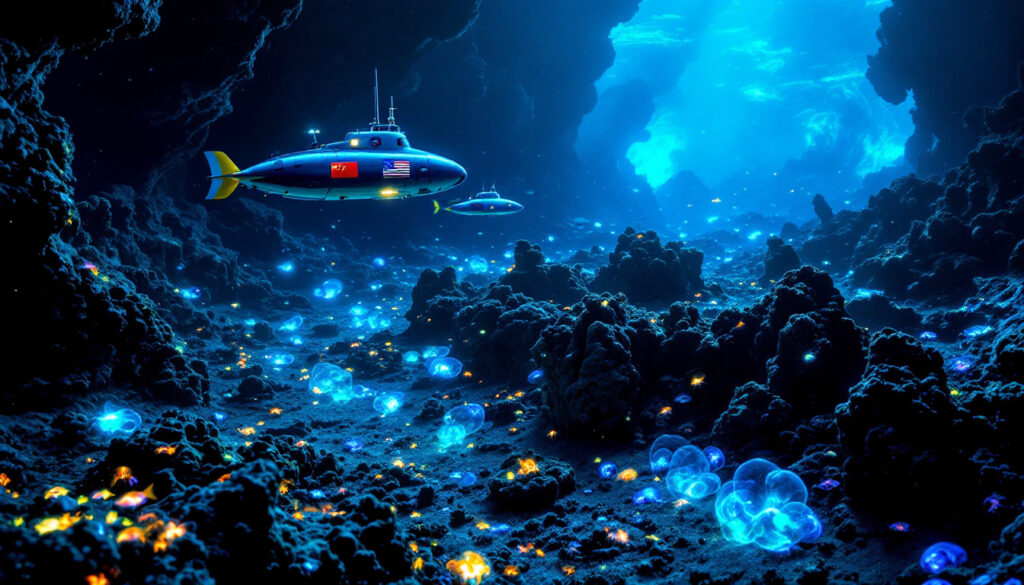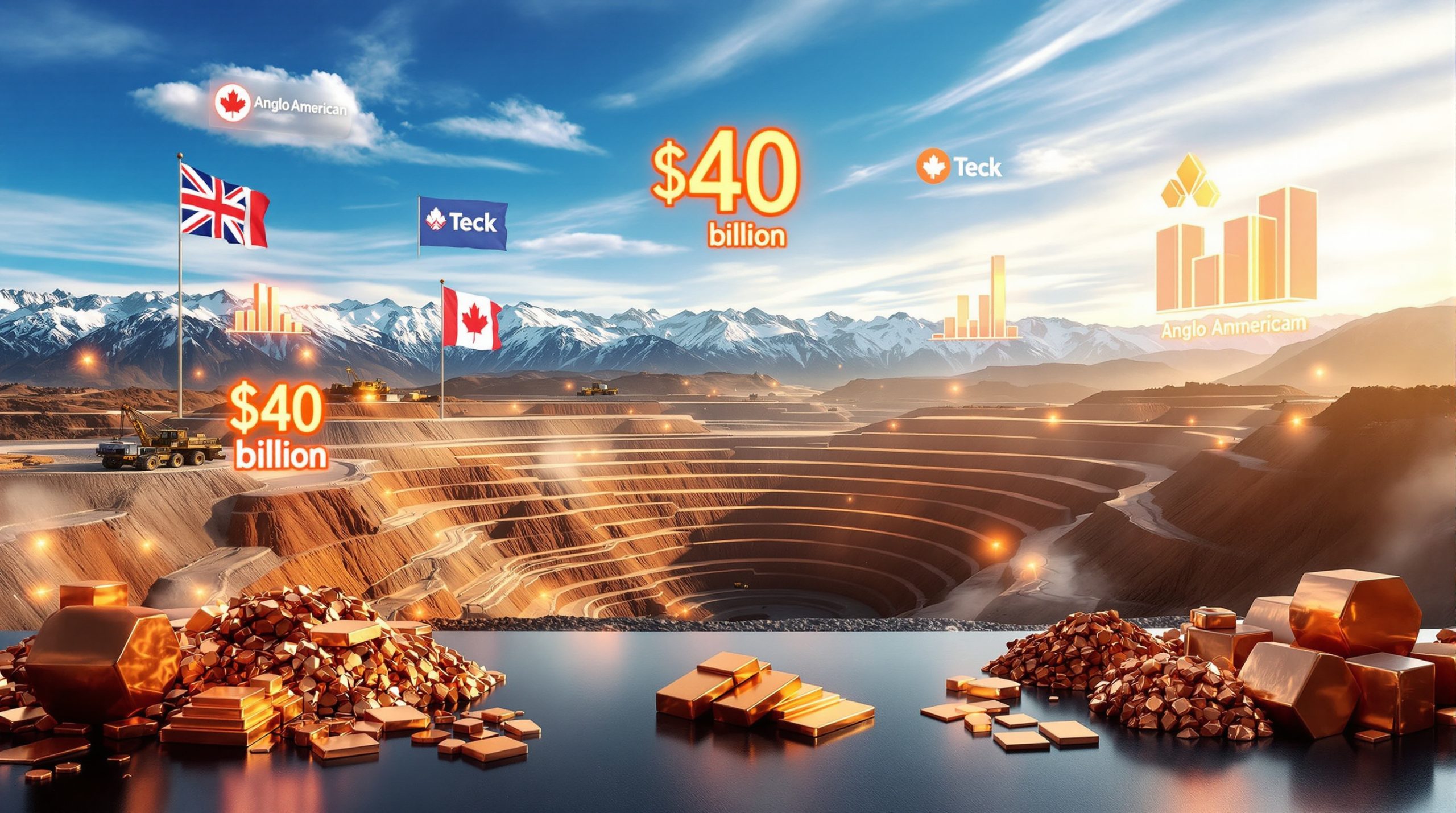China Urges US to Follow International Law on Deep-Sea Metals Stockpile Plan
The strategic competition over critical minerals between the United States and China has intensified with the Trump administration's proposed executive order to stockpile deep-sea metals from the Pacific Ocean seabed. This plan, reported by the Financial Times in April 2025, aims to reduce U.S. dependence on China's dominant position in rare earth element (REE) supply chains, which account for approximately 90% of global refined production. China's foreign ministry has countered by invoking the United Nations Convention on the Law of the Sea (UNCLOS), asserting that seabed resources constitute "the common heritage of mankind" under the governance of the International Seabed Authority (ISA). The confrontation highlights intersecting challenges of resource security, environmental sustainability, and geopolitical investor strategies in an era of accelerating clean energy transitions.
Strategic Foundations of the US Stockpile Initiative
Origins and Legal Mechanics of the Executive Order
The draft executive order represents a strategic escalation in U.S. resource policy, authorizing the Defense Logistics Agency to accumulate "large quantities" of cobalt, nickel, and rare earth metals from polymetallic nodules in the Clarion-Clipperton Zone. This abyssal plain between Hawaii and Mexico contains an estimated 21 billion tons of manganese nodules, with concentrations of 1.3% nickel and 0.2% cobalt – significantly higher than terrestrial ores. The order leverages Section 303 of the Defense Production Act, last invoked in 2022 for semiconductor manufacturing, which permits presidential authority to prioritize domestic resource acquisition for national defense.
Critically, the U.S. position remains legally ambiguous due to its non-ratification of UNCLOS despite signing the treaty in 1994. This creates jurisdictional complexities, as the ISA governs mineral exploitation in international waters beyond exclusive economic zones. The proposed stockpiling would likely require partnerships with ISA-licensed contractors, such as The Metals Company (TMC), which holds exploration rights to 9.8 million hectares in the CCZ.
Technological and Logistical Considerations
Deep-sea mining operations face unique engineering challenges, including operating at depths exceeding 4,000 meters where pressures reach 400 atmospheres. Nodule harvesting systems like TMC's "Patania II" collector utilize water jets to dislodge nodules while sediment plumes are captured by containment systems – though environmentalists contest the efficacy of these measures. Processing infrastructure presents another bottleneck; the U.S. currently lacks commercial-scale rare earth separation facilities, relying on Chinese refining expertise that constitutes 85% of global capacity.
The Pentagon's 2024 Critical Minerals Sustainability Report outlines $1.2 billion in planned investments for domestic processing plants, targeting capacity to handle 15,000 tons annually of neodymium-praseodymium (NdPr) oxide by 2027. This would support permanent magnet production for 3 million electric vehicles, addressing a key vulnerability as China controls 92% of global NdFeB magnet output.
China's Geoeconomic Countermeasures
Legal and Diplomatic Posturing
Beijing's invocation of UNCLOS Article 136 ("common heritage" principle) serves dual purposes – challenging U.S. unilateralism while positioning China as a defender of multilateral governance. This narrative gains traction among developing states through China's financing of ISA technical assistance programs, which have allocated $20 million since 2020 for deep-sea research in Small Island Developing States.
Simultaneously, China continues expanding its seabed exploration footprint, holding five of the 31 active ISA exploration contracts. The "Jiaolong" submersible's recent discovery of high-grade cobalt crusts in the Northwest Pacific (8.9% Co content vs. terrestrial average 0.1%) demonstrates advanced capabilities. Export controls remain Beijing's primary trade weapon, with August 2025 restrictions on dysprosium and terbium – critical for missile guidance systems – causing spot prices to spike 47% in London Metal Exchange auctions.
Domestic Supply Chain Fortification
China's 15th Five-Year Plan (2026-2030) allocates ¥120 billion ($17.3 billion) for rare earth industry consolidation, aiming to eliminate 40% of small-scale processors to combat illegal mining and environmental violations. The strategy focuses on vertical integration, illustrated by CMOC Group's $1.9 billion acquisition of magnetic material producer JL Mag, creating the world's largest integrated rare earth company with 35% global commodity insights market share.
Environmental regulations serve dual commercial/strategic purposes. Stricter emissions standards for solvent extraction (limiting wastewater COD to 50mg/L) have forced Western companies to either license Chinese purification technologies or face 30% cost penalties. This technological dependency undermines alternative supply chain development, as evidenced by Lynas Corporation's 18-month delay in obtaining Chinese process approvals for its Kalgoorlie cracking facility.
Environmental Implications of Seabed Resource Exploitation
Ecosystem Vulnerability Assessments
The CCZ's benthic environment hosts over 5,000 undocumented species, with recent UK/NHK surveys discovering 90% endemism rates among megafauna. Mining impacts manifest through:
-
Direct habitat destruction: Nodule removal eliminates the only hard substrate in abyssal plains, requiring millennia for natural reformation.
-
Sediment plumes: Model simulations show collector vehicles generating 30,000 m³/day of suspended particles, potentially smothering filter-feeding organisms 50km downstream.
-
Noise pollution: Low-frequency sounds from mining operations (110-130dB re 1μPa) could disrupt whale communication across 500km ranges.
The ISA's Regional Environmental Management Plan (REMP) for the CCZ mandates 30% protected area set-asides, but conservation biologists argue this insufficiently accounts for larval dispersal patterns spanning hundreds of kilometers.
Carbon Cycle Considerations
Deep-sea sediments represent the planet's largest carbon reservoir, storing an estimated 300 gigatons – three times terrestrial vegetation. Disturbance risks include:
-
Methanogen activation: Anaerobic sediment exposure could release 0.1-1.2 Gt CO₂-equivalent annually through archaeal methanogenesis.
-
Reduced carbon sequestration: Nodule microbiota contribute to benthic-pelagic coupling, facilitating 2-5% of oceanic carbon export to depths.
Lifecycle analyses present conflicting conclusions. The MIT DeepSEA project estimates seabed cobalt generates 75% lower CO₂/kg than Congolese artisanal mines when accounting for land use changes. Conversely, the IUCN calculates net-positive emissions if methane release exceeds 0.4 Gt/year.
Market Reconfiguration and Investment Implications
Price Dynamics and Substitution Effects
The U.S. stockpile announcement has already shifted market psychology. Cobalt forward contracts for 2027 delivery fell 12% on the LME, while NdPr oxide prices stabilized after hitting record $120/kg in Q1 2025. Secondary markets show increased activity, with Glencore reporting 40% QoQ growth in recycled battery metal volumes.
Material science innovations threaten long-term demand. Toyota's 2025 solid-state battery prototype uses 80% less cobalt through lithium-sulfur chemistry, while Hitachi has developed ferrite magnets with 85% of NdFeB performance at 30% cost. However, defense applications remain resistant to substitution due to stringent performance requirements.
ESG Investment Paradigms
The MSCI Deep-Sea Mining Index has outperformed conventional mining indices by 15% year-to-date, driven by:
-
Lower Scope 1 emissions (0.8 tCO₂e/t metal vs. 4.2 tCO₂e/t for land-based nickel)
-
Zero child labor exposure compared to DRC cobalt mines
-
Smaller surface footprint (200 km² vs. 2,000 km² for equivalent terrestrial output)
Sovereign wealth funds demonstrate diverging strategies. Norway's GPFG excludes all seabed mining investments pending ISA regulations, while Saudi Arabia's PIF has committed $2.3 billion to Maersk's offshore extraction subsidiary. This reflects growing tensions around ESG challenges in mining and the push toward sustainability.
Legal and Geopolitical Pathways Forward
UNCLOS Ratification Prospects
The Biden administration's 2023 UNCLOS accession bill remains stalled in Senate Foreign Relations Committee, facing opposition from Senators citing sovereignty concerns over Article 82 revenue-sharing (mandating 7% royalties for ISA distribution). Ratification would grant the U.S. voting rights in ISA Council decisions, currently dominated by China (Group A seat), Russia (Group B), and Brazil (Group C).
Alternative frameworks emerge through minilateral partnerships. The 2024 Indo-Pacific Critical Minerals Alliance (IPCMA), comprising the U.S., Japan, Australia, and India, establishes shared stockpiles and R&D funding pools exempt from WTO subsidy rules under national security provisions.
Conflict Prevention Mechanisms
The Carnegie Endowment's 2025 scenario analysis identifies three risk pathways:
-
Naval escorts for mining ships escalating into freedom of navigation disputes (35% probability)
-
ISA governance deadlock leading to unilateral license issuance (50%)
-
Environmental disasters triggering moratoriums and liability claims (15%)
Confidence-building measures proposed include real-time AIS tracking of mining vessels and joint US-China marine research expeditions under ISA observation – building on successful 2024 collaborative surveys of the Mariana Trench. According to Reuters reports, China has repeatedly emphasized the importance of following established international protocols in deep sea exploration.
Conclusion
The deep-sea metals confrontation epitomizes 21st-century great power competition, where technological prowess, legal framing, and supply chain resilience determine geopolitical advantage. While the U.S. stockpile initiative addresses acute vulnerabilities in defense-critical materials, its success hinges on resolving the fundamental contradiction between unilateral resource acquisition and multilateral ocean governance. China's dual strategy of legal challenges and market manipulation underscores the need for coherent international frameworks balancing economic, environmental, and equity considerations.
Emerging solutions lie in circular economy innovations – Urban Mining Co. now recovers 95% of rare earths from hard disk drives through ionogel extraction – and diplomatic mechanisms ensuring seabed resources benefit humanity collectively. The deployment of digital mining technologies could mitigate environmental impacts while maintaining economic viability. As the ISA finalizes exploitation regulations by 2026, the coming years will determine whether deep-sea minerals become a catalyst for cooperation or conflict in the emerging commodity super-cycle driving the clean energy transition.
Ready to Profit from the Next Major Mineral Discovery?
Stay ahead of the market with Discovery Alert's proprietary Discovery IQ model, which instantly notifies investors of significant ASX mineral discoveries and turns complex data into actionable insights. Explore why historic discoveries can generate substantial returns by visiting Discovery Alert's dedicated discoveries page and begin your 30-day free trial today.




